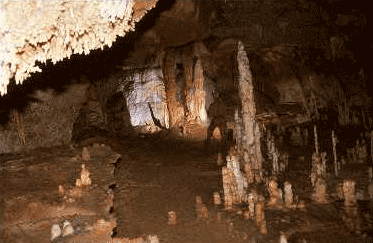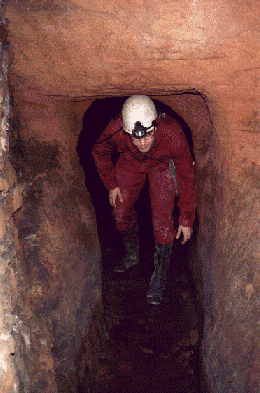Extracts from UBSS Newsletters
Author: Dickon Banks
We arrived shortly before ten at the tackle store and met Taz; in what she told us was a rare on time appearance. About this time I discovered I had left my wellies behind and she kindly gave me a lift to pick them up. After travelling to the hut in style in the smoking car we arrived to find the preparations under way, both the bonfire and fire pit being constructed by Tim with his trusty chainsaw.
Author: Jon Telling

The trip started (too!) early on boxing day morning ; everyone piling on the boat from Dover - Calais, and driving down through France (Steve and Andy in their vans, Simon and me grabbing a lift in Tim’s ’not so new as it used to be’ Peugeot 206). Journey highlights: Tim managing 110 mph in his supposedly 105 mph max. car (later - in what can only be described as a near-death experience - he managed to force a French driver off the road and up a grass verge!), and a night stop-ov er on the way down in a cheap Fl hotel where a combination of red wine, whisky, 2 bunk-beds and various odd bodily positions (ooh-err) left me with overstretched ligaments in a knee. Not the best start!
Author: Andy Farrant
Those of you lucky and privileged enough to have joined the UBSS caving elite and actually gone caving, or at least spent some time in the Red Lion, may have heard rumours, myths and legends about the infamous GB Dig. Much of wha t you may have heard may have not been too complimentary - ‘its wet, muddy and horrible…’ ‘why..?’ and ‘digging is for the beardy-wierdy old lags’. So, why have members of the club spent the last 25 odd years toiling away (albeit intermittently) in the muddy grovel at the end of Bat Passage? Good question. There are several reasons.
Author: Jacob Podesta, Photos: Stu Alldred_
The driest summer for seven years and UBSS return to Ireland, hopefully to make up for the wettest summer in 100 years the previous time.
That’s how weather works. Due to the varying availability of people, the evening of the 7th of September arrived and a mere four cavers, Stuart Alldred, Anya Keatley, Cameron Bullen and Myself, crossed two countries and one sea to explore, map and describe the caves of Co. Mayo with relatively intact sanities, despite the best efforts of a wayward pair of headphones and Cotton-eyed Joe. Delirious with lack of sleep, the second day was spent making our way from the ferry terminal to our cottage near Ballinrobe. Along the way we went for a walk in Pigeon Hole Woods to scout out the caves there. Had we the foresight to bring a torch, this endeavour might have been more productive. The effects of the day and a half’s travel were so acute that we also utterly failed to find the café in Cong with free Wi-Fi, a mistake we didn’t make again (twice a day, every day for two weeks).
Author: Steve Cottle
Some of this years special caving trips have been arranged locally. With a number of near-by underground secrets Wednesday evenings were the suited to being the optimum day for these visits. From caving in Southmead in the impressive Pen Park Ho le to a specially arranged trip down Redcliffe mines.

These mines date back to at least the 18th century when the area of Redcliffe became an important area for glass making. There are many possibilities as the original excavation of the mines though dating back through Alfred the Great and eve n to cavemen. The sandstone of the underlying rock was excellent for the manufacture of glass being made for bottles to export water from the Hot wells of Bristol. However as Redcliffe was already built upon and the sandstone had to be mined. The mines sp an over a very large area that cannot be quantified now due to the loss of areas by the building of the harbour railway and bombing from the blitz. However thanks to the ACG a trip was arranged for the mines on one Wednesday in November.
Author: Johnny. K. Pitts, 8th June 1998
From 1945 to 1950 was a time of transition for the Society. People like Francis Goddard and Rod Pearce, medical students who had been successive secretaries during the war, had moved on to adult life and had less and less time for caving. Professor Dobson, who had been President all through the war, died in 1947 and was succeeded by Trat who had been released from internment in Singapore at the end of the war. He continued working in Singapore until 1950 but visited the U K on many occasions during those years and picked up the threads of his long involvement with the Society. Bertie Crook, who as Treasurer had played the role of elder statesman through the war years, progressively handed over that role to Trat. Bertie had served in the First War but was still actively caving during this period. Desmond Donovan returned from the army, becoming the curator of the museum in 1947. New students appeared, like Arthur ApSimon, who half a century on would become President, and Ralph Stride, who instantly became secretary, and almost as quickly became involved in bitter factional squabbles.
Author: Kayleigh Gilkes, Photos: Rob Debois
My first discovery of the weekend: Yorkshire is a long way from Bristol, this seems even longer when entertainment involves making up games to play which involve maths! the number plate game was damn addictive though. The journey got even more exciting when we left the motorway and Frank began navigating, well I say navigating, map reading is probably a better description. He claims it is not the job of the navigator to look at road signs (he couldn’t see them anyway due to not having his glasses) and thus I took to shouting random directions at junctions! probably not the best idea but we got there eventually. Arriving at 11.45pm we were glad to discover that Eddy was not lying when he described the Helwith bridge inn as “the best pub in the world”. The place doesn’t shut and serves good beer and great pork scratchings.
